Slanting torn bangs: who will it go and how to do it?
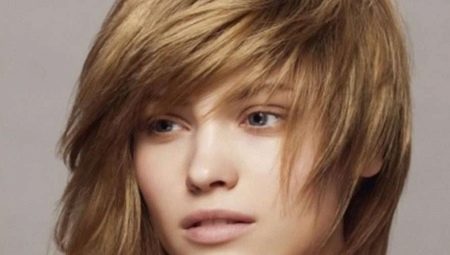
Bangs are considered an addition to the haircut and can radically transform the face, focus on graceful features or hide flaws. This article discusses in detail the types of oblique bangs, methods of correcting a face with its help, and an easy way to create it yourself at home is described step by step.

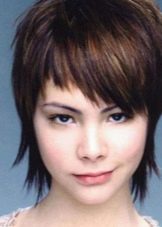
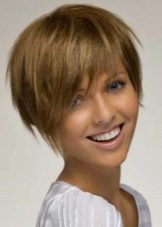
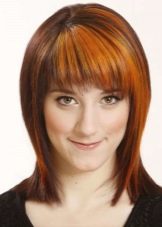
Advantages and disadvantages
Like any haircut, an element such as a bang has its pros and cons.
Pros.
- Multifunctionality. The oblique shape is comfortable to wear, with sufficient length, it can be tucked behind the ear, styled using hot professional tools or using hairpins.
- Ease of maintenance. An oblique bang, made on any hair, does not require careful styling. It will be enough just to comb and dry it with a hair dryer or naturally, combing in the right direction.
- Versatility. There are no restrictions on hair length, type of haircut, they are suitable for any hair type and color.
Excessive length of the front strands can visually stretch it even more. But that doesn't mean they can't wear side bangs. You just have to choose the right look.

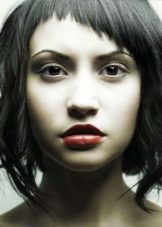


Views
Any type of treatment on the front strands of hair will be performed on long, medium and short hair.
Elongated, milled on the side
This look is suitable for all hair types. The front strands are trimmed using the straight cut method, excess thickness is removed with thinning scissors, thereby allowing the hair to neatly frame the face. The end of the bangs can be much longer than the starting strand.

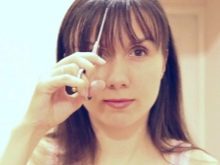
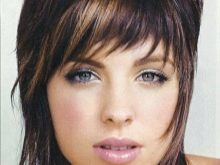
Standard straight cut
The option involves cutting the hair of the frontal zone diagonally without further processing with a thinning or other tool. For owners of large facial features, such bangs are not recommended, it is advisable to lighten it by thinning or to arrange torn ends.
For all other girls, this form will be an excellent replacement for the standard straight bangs.
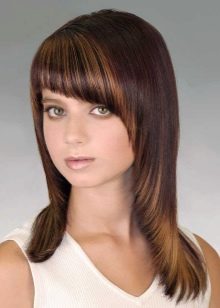


Oblique ragged
Torn ends can be done using a variety of techniques and tools. This type of strand is suitable for cascading haircuts of any length, creating a single, complete composition.
Torn bangs on short hair are suitable for young girls, creating a daring style for them.
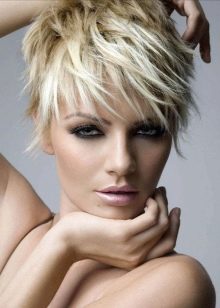
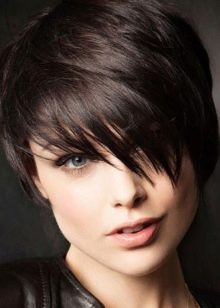
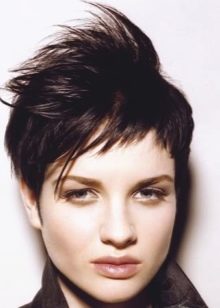
Graded
The graduation technique allows you to create volume on fine hair, which is especially important for hair in the frontal zone.
Varieties of the graduated shape.
- Short. It is preferable to wear the owners of soft facial features. For girls with pronounced rough or sharp features, this bang will further emphasize the external aggressiveness of the image. The length of short bangs starts from 3 cm and reaches 5 cm. Looks in contrast on long and medium hair. Together with a short haircut, it focuses on the face, the shape of the eyebrows. Perfectly complements the bob haircut, but together with it requires careful styling.
- Long. Depending on the length of the initial and short strands, it visually lengthens or narrows the shape of the face. For the first option, the maximum length of the bangs reaches the middle of the chin or cheeks, the initial strand - to the middle of the forehead. In this case, the bangs can be tucked behind the ear. In the second case, the initial strand is located at the level of the eyebrows or below, the tip of the bangs is trimmed not below the level of the middle of the cheek.
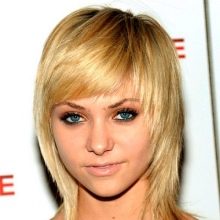

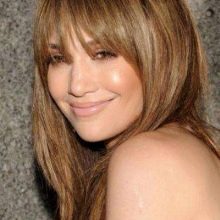
Asymmetric
It comes in short and ultra-short lengths. It is trimmed using the "free hand" technique, which allows you to create the effect of strands of different shape and thickness, made in the form of cloves.
This type of bangs is suitable for creative girls and women. Combines mainly with short and medium-length hair and with different types of faces.

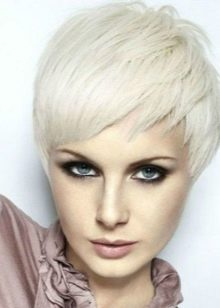

Custom line
The haircut of the strands can be performed in a wide variety of forms: the cut is wavy or shortened only by half of the zone of the front strands, forming a stepped drop along the edges or in the center of the zone, triangular, arched options. Bangs with a non-standard line in ordinary life are almost never worn, this type is more suitable for podium or competitive performances of hairdressing masters, since such a bang for execution requires sufficient skill in using scissors.
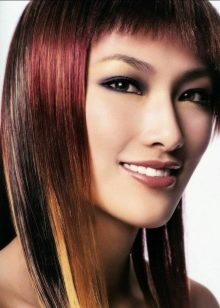

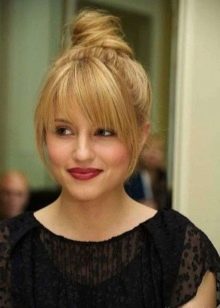
How to choose by face type?
The second criterion for choosing the type of bangs is the shape of the face. The formation of frontal hair strands leads to a visual correction of the imperfections of its shape.
Round
Side bangs can be worn on an asymmetrical parting. It should start slightly above the level of the eyebrow or at the level of the nose, as long as it covers one of the sides of the face as much as possible.
It is recommended to trim the classic straight cut, milled, graduated and torn bangs.

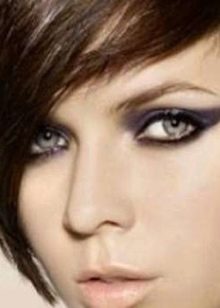
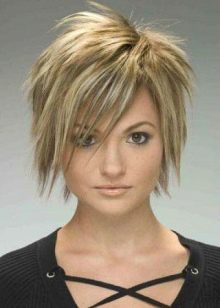
Square and diamond
It is not recommended to wear short or creative bangs for this type of face. The last frontal strand should be as long as possible, reaching the level of the chin or below. The start of trimming the bangs begins in the eyebrows or eyes.
Oblique bangs can be combined with any length, but it is advisable to give preference to haircuts for medium and long hair to give the face an even more elongated shape.
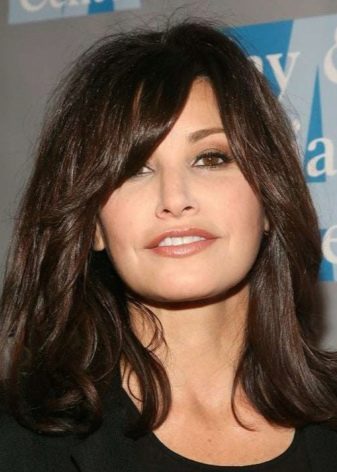
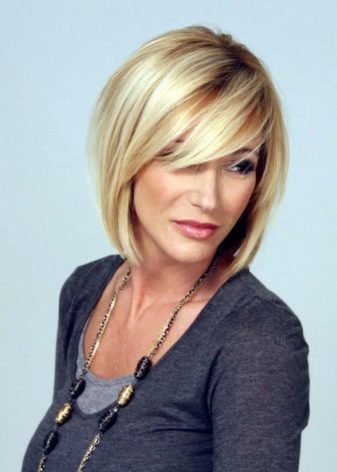
Triangular
For a triangular face, the slanting bangs should be divided into two zones with an asymmetrical parting. In shape, it will resemble an arch with an offset center.This distribution of hair will cover the area of the cheekbones and temples, visually giving the face an oval shape. It is recommended to cut with a straight or serrated cut, using the slicing method. Graduated and milled bangs ends at the chin and below. Combines with torn, cascading haircuts on medium to long hair.
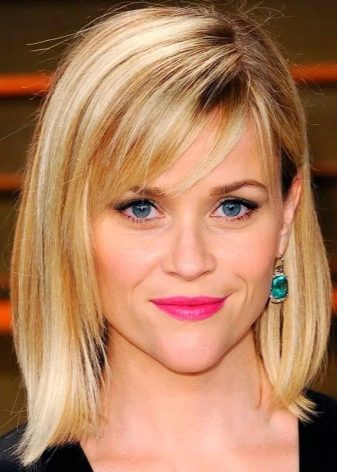
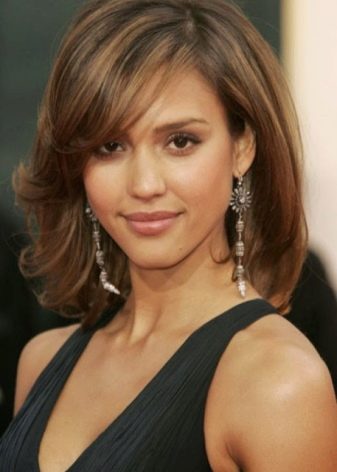
Elongated
For owners of an elongated face, it is recommended to trim short and medium-length oblique bangs of any kind. The main task here is to cover the forehead.
Bangs are worn with any hair length, but it is best suited to a bob with a length not higher than the chin.
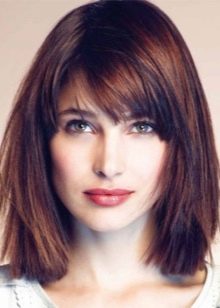


Oval
Owners of this type of face can experiment with different types of bangs without fear that they may not suit them. The bangs are combined with various types of haircuts and with any hair length.
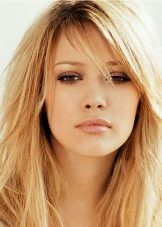
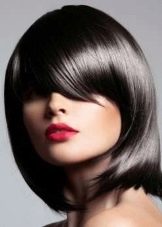
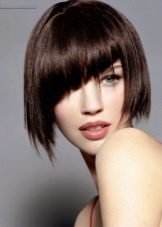
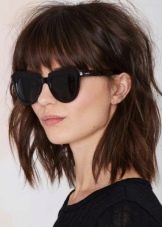
Hair structure, skin
Hair structure and skin type are other criteria for choosing a haircut for frontal strands. Owners of oily skin will have to devote more time to the condition of the bangs, since due to exposure to sebum, the hair will become dirty faster.
The cutting technique depends on the structure of the hair. Fine hair should preferably not be trimmed with thinning scissors or a razor. It is necessary to perform a straight cut, graduation or poiting - point cut.
For such a structure, it is necessary to preserve the natural thickness of the hair as much as possible. The depth of the bangs zone can be maximum and go to the crown.
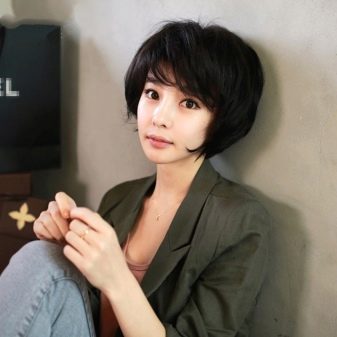

Thick hair will survive all types of haircuts, but thinning techniques should be preferred in order to remove excess thickness and give the bangs more mobility, while maintaining its shape. For creative options, thick hair is an excellent material, its thickness can withstand torn and asymmetrical shapes.
When creating a bang, it is not recommended to select a zone that is too wide and deep in order to avoid excessive massiveness, which then cannot be lightened in any way.



How to cut?
You can cut your bangs yourself or use the services of a hairdresser. Let's consider the first case.
To make any version of your favorite bangs at home, you need to use sharp tools: a razor or scissors. The instrument must be professional to reduce the risk of damage to the hair structure resulting in split ends.
Cutting is done on wet or dry hair. The latter method is performed on a prepared base, for example, to obtain the desired length, the hair is pre-stretched with an iron or a hairdryer, while simultaneously setting the desired direction for the future haircut.

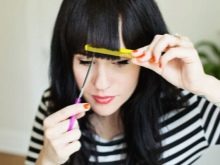
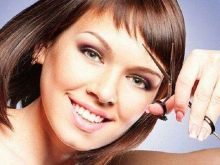
Instruments:
- straight and thinning scissors;
- comb with fine teeth;
- clamps;
- hair elastic (optional);
- towel.
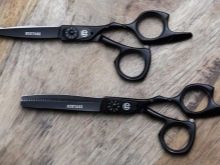
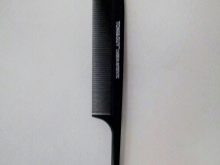

The process of cutting a classic straight cut bangs.
- The first step is to highlight the bangs area. It can be made in the form of a semicircle or a triangle. The width of the bangs should cover the frontal depressions, the side areas where the vellus hair grows, and form the marginal hairline in the forehead.
- Having decided on the width and depth of the treated area, loose hair must be secured with clips or collected with an elastic band so that later they do not interfere during the cutting process.
- The selected area must be thoroughly moistened and wrung out with a towel. The strands should be wet without dripping.
- Comb the section in the direction of natural hair growth.
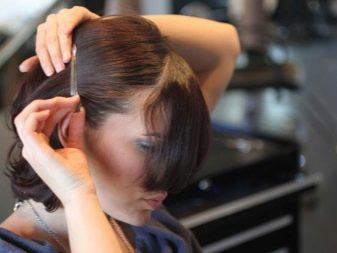
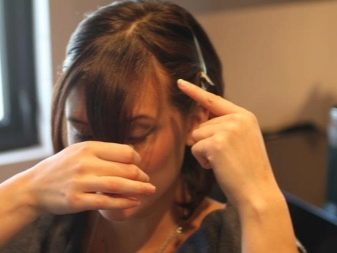
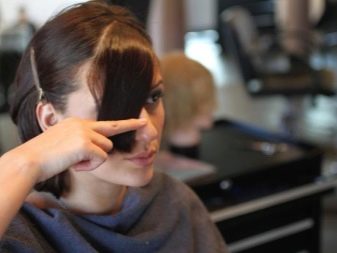
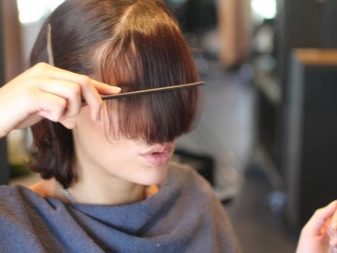
- Determine the start and end point of the bangs on either side. Make notches. Important: damp hair should be cut 0.5-1 cm below the desired length. For example, the first strand of dry bangs should start from the middle of the forehead, then the wet hair is clipped at the level of the top of the eyebrow. Hair lifts slightly as it dries, which can result in shorter bangs than originally planned.Curly hair is cut only on a dry base after styling the selected area!
- Now it remains to connect the two points with a straight cut.
- Dry bangs.
- On dry hair, edging is made, that is, giving the final shape of the haircut.
Thinning can be done if desired to lighten the ends or give them a ripped effect. Due to its serrated shape, the scissors will partly cut the hair, creating a "step" effect.
The longer the selected area is processed, the more ragged the effect will be in the end.

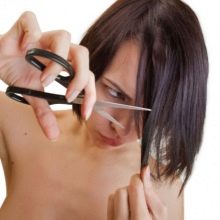
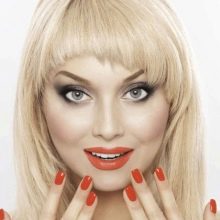
Advice
Torn bangs require frequent correction and maintenance. With excessively frequent use of thermal devices, the ends of the hair will become thin and brittle, in which case the shape correction is carried out every 1-2 weeks. Hair prone to rapid growth is cut every 2-3 weeks.
During styling bangs are dried first, since this zone, due to its length and density, will dry out the fastest. With prolonged exposure to hot air on a dry base, the risk of damage to the hair structure increases.
To highlight individual strands, it is worth using styling products of light to medium hold with a matte or glossy effect.
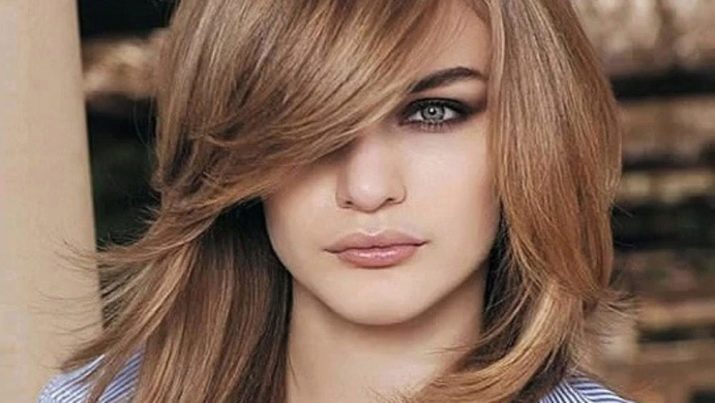
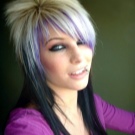

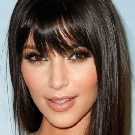
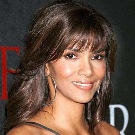

The technique for cutting torn bangs is shown in the following video.








